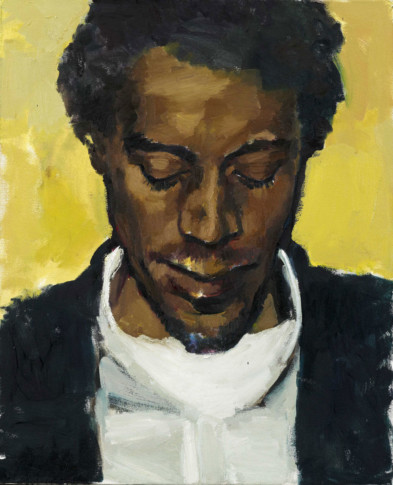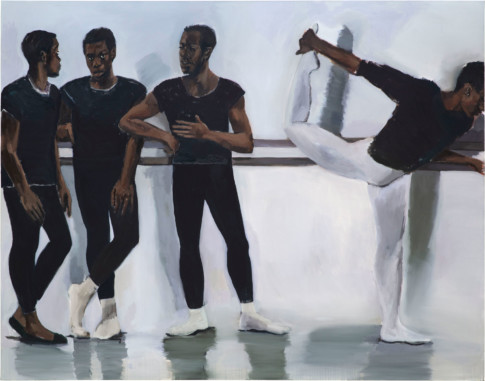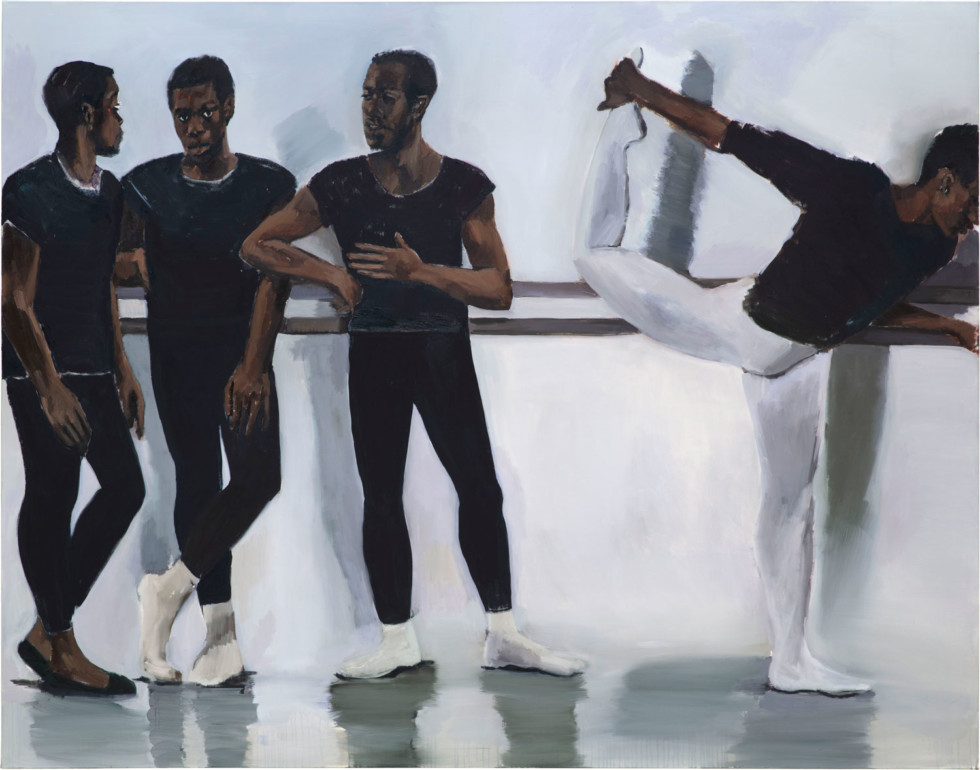
Lynette Yiadom-Boakye, A Concentration, 2018. Carter Collection © Courtesy of Lynette Yiadom-Boakye
About the exhibition Lynette Yiadom-Boakye: Fly In League With The Night
A profound interest in paint, its materiality, and how the eye perceives colour informs Yiadom-Boakye’s practice. The poetic titles of her paintings add veritable brush strokes to the canvas. She sees visual art and literature as separate yet intertwined forms of creativity. Along with the visual narratives, each title is intended as a part of the painting, as opposed to an explanation of it.
”Fly In League With The Night” is the artist’s largest retrospective exhibition to date, and includes roughly 80 paintings spanning her entire career, from the graduation show at the Royal Academy Schools to today. The exhibition is produced in close collaboration with Lynette Yiadom-Boakye, who instead of ordering her works chronologically, has created contexts, moods, and dialogues between works.
Techniques and Processes
Lynette Yiadom-Boakye paints with oil on canvas or linen. In this sense, she adheres to a centuries-old tradition that explores the materiality and capacity of painting to create images beyond time and space. In her early studies, she painted from live model, but soon found that rather than the meticulous and slow process of painting actual human beings she wanted the freedom to act in the moment, exploring the potential of colour, composition, light and tone.
The people in Yiadom-Boakye’s works are culled from drawings, photographs, historical paintings, newspaper cuttings and other sources that she collects in scrapbooks. Her paintings are improvised in a conversation between brush, paint and canvas. Themes or subjects can evolve over a day. Finished works are left to mature in the studio for a while, entering into dialogue with new paintings – a method that is reflected in how the artist has composed this exhibition as a rhythmic and dramaturgical flow.
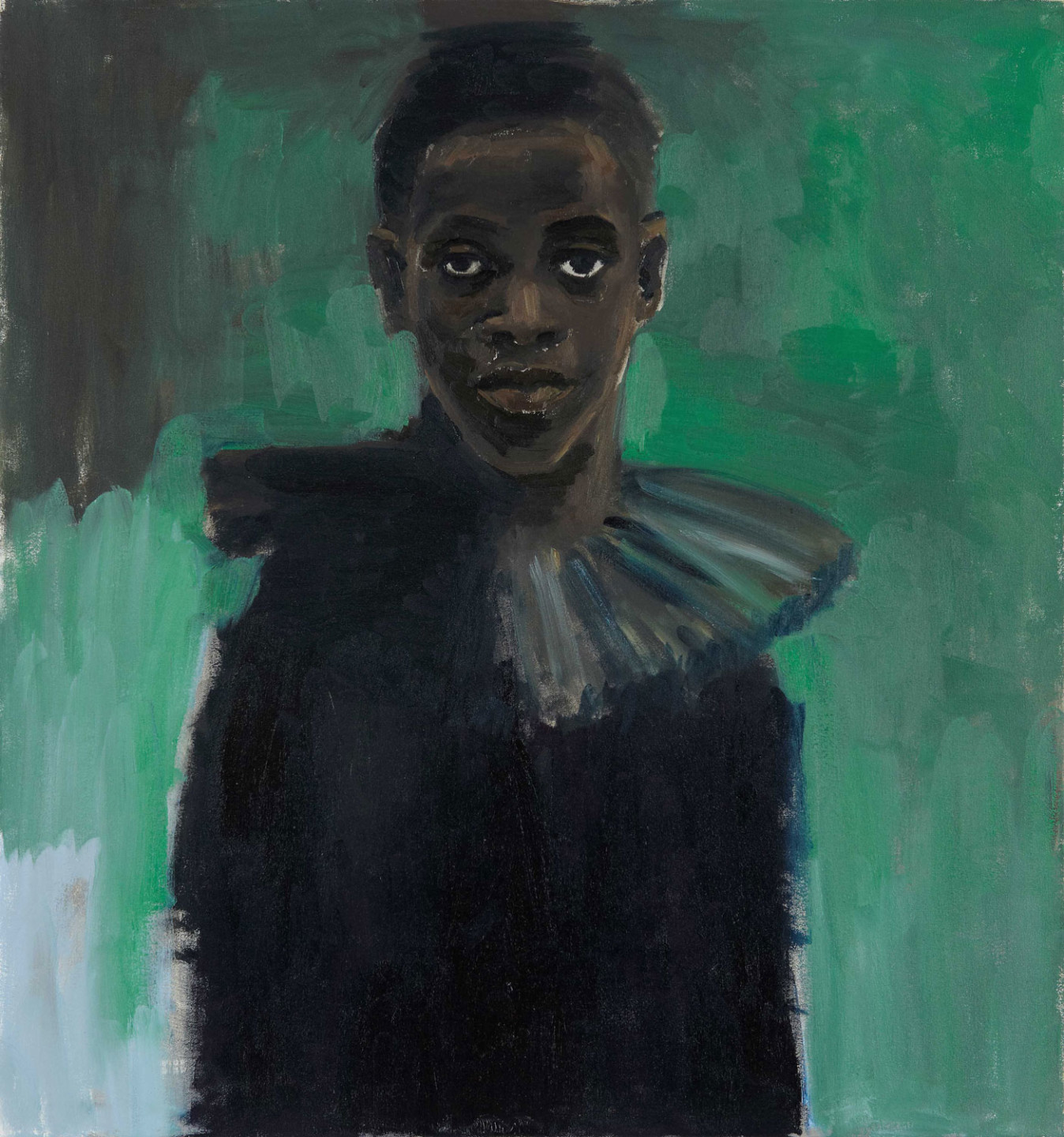
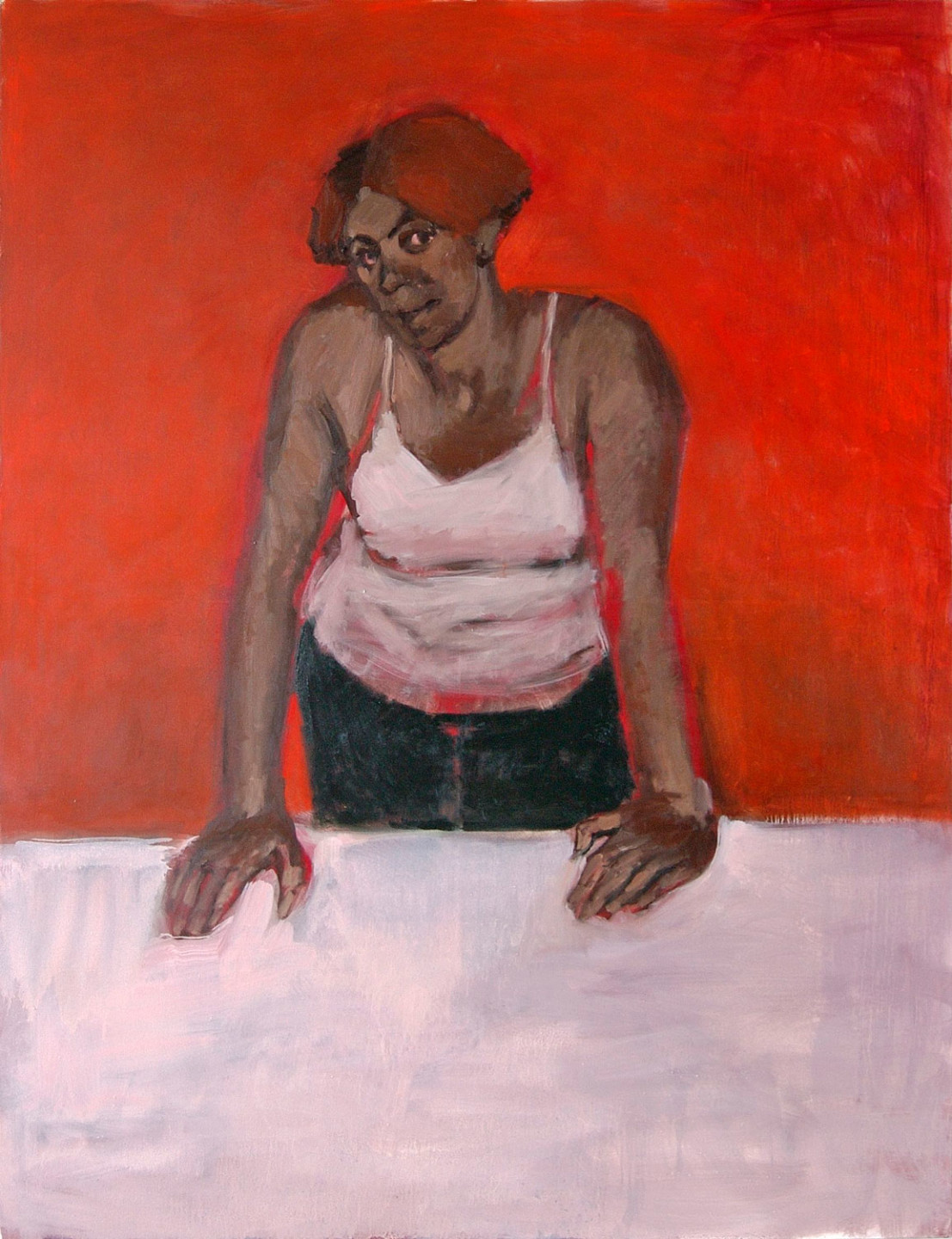
Painting
As a 16-year-old, Lynette Yiadom-Boakye began visiting the National Gallery and other major art museums in London, to see the works of earlier artists. She studied their techniques in detail, noting how the results differed depending on their approach. She was inspired by, among others, the impressionists Walter Sickert and Edgar Degas and their use of composition and economy of mark. Her own method involves splitting the motif’s colours into components and examining how they influence one another, focusing on how the eye reads colours and images. Yiadom-Boakye never uses a ready-made black but mixes blues and browns to capture all the hues and nuances. In her early works earth pigments appear, later joined by strong, bright accents. In historic paintings, precious red was often only used when portraying rulers – an example of a colour history reference of potential relevance to her. The linen or cotton canvas is prepared with rabbit glue by Yiadom-Boakye to create the right surface for the paint, a method that dates back to the middle ages.
Blackness has never been other to me. Therefore, I’ve never felt the need to explain its presence in the work anymore than I’ve felt the need to explain my presence in the world, however often I’m asked. I’ve never liked being told who I am, how I should speak, what to think and how to think it. I’ve never needed telling. I get that from my family. Across generations, we’ve always known who we are. To be measured relative to something that actually has nothing to do with you or your experience, some self-appointed superior, the ghost of who you ought to be... none of this has ever made any sense and yet somehow you live with it, live in it. But the idea of infinity, of a life and a world of infinite possibilities, where anything is possible for you, unconstrained by the nightmare fantasies of others, to have the presence of mind to walk as wildly as you will, that’s what I think about most, that is the direction I’ve always wanted to move in. Following my own nose and doing as I damned well pleased always seemed to me to be the most radical thing I could do. It isn’t so much about placing black people in the canon as it is about saying that we’ve always been here, we’ve always existed, self-sufficient, outside of nightmares and imaginations, pre and post ’discovery’, and in no way defined or limited by who sees us.
– Lynette Yiadom-Boakye
Figures and Motifs
The characters in Lynette Yiadom-Boakye’s works are not portraits in the sense that they were made from life. The motifs in her paintings can be based on a colour, a movement, or a gesture. Resting, observing and occasionally dancing bodies are recurring subjects. The striped jumpers worn by some figures can serve as painterly exercises or warmups before embarking on a new series of works. Characters sometimes reappear in several scenes. The artist’s imagery portrays intimate conversations between figures, giving rise to possible stories in the beholder’s imagination. People are depicted without any objects or references that give clues to their influence or class. Their expression and eyes are fixed on something beyond or look inwards or straight at the viewer, as though with a command or question. The works can be read as enigmas or ciphers, a coded language. Her compositions unfold into stories and atmospheres for the viewer to explore.
Pictorial Space
A pictorial space is the illusion of three-dimensionality or depth that an artist creates with brushwork, pigments, and visions on the flat canvas. In many of Yiadom-Boakye’s paintings, the pictorial space is shallow. The near-abstract backgrounds are bold despite being painted with light brush strokes, putting the characters in the close foreground. The backdrop is sketchy, as is the information about who the people in the picture could be. In her landscapes, Yiadom-Boakye combines abstraction and figuration, contrary to the Western canon that expects artists to choose only one of these approaches. Other paintings are composed according to the golden ratio, an aesthetic ideal originating in classical antiquity.
Animals, including foxes, owls, and other birds, occasionally appear in the image. The sense of fictive visual reality means that a wild animal on a chequered floor seems perfectly appropriate. The monochrome backgrounds evoke an apparent void between the characters, a distance that is nevertheless charged with interpersonal relations.
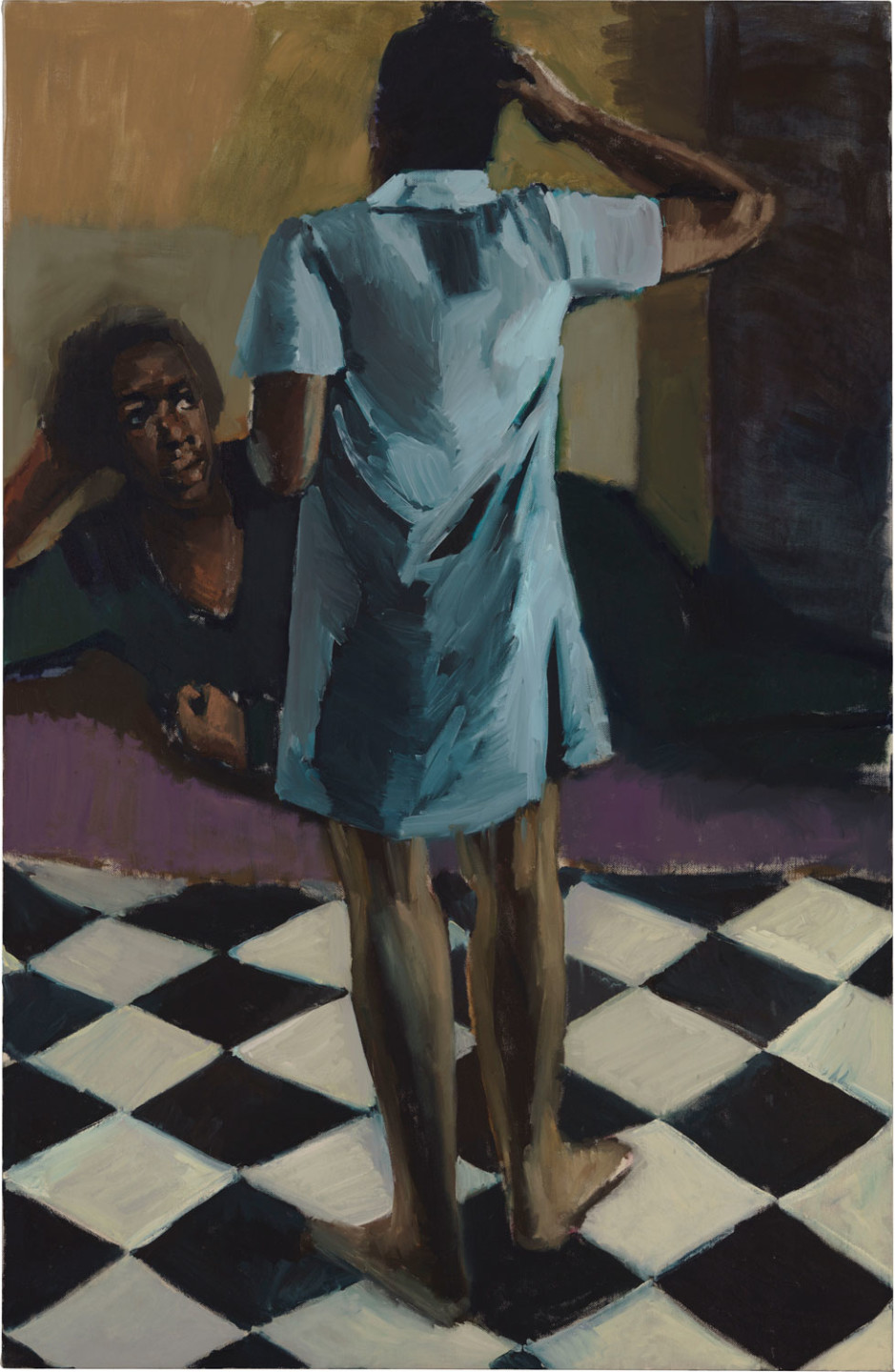
A Writer and a Painter
Lynette Yiadom-Boakye is a writer and a painter, and regards them as two different kinds of creative practice. Fiction and narration are profoundly present in both processes: “I write about the things I can’t paint and paint the things I can’t write about.” The exhibition’s title is from a poem by the artist, written especially for this presentation: ”Fly In League With The Night”. The titles of the paintings can be seen as extensions of the prose, she says, and as additional brush strokes on the canvas.
The exhibition catalogue includes “five extracts from a detective novel” by Lynette Yiadom-Boakye wherein readers may accompany a detective inspector through London in search of a woman who has disappeared. One story features a dialogue between a seagull and a swan. From their respective special differences and prejudices, the birds discuss violence while witnessing a murder take place. The settings and characters are detailed. The powerful images that Lynette Yiadom-Boakye paints – and writes – set the imagination going.
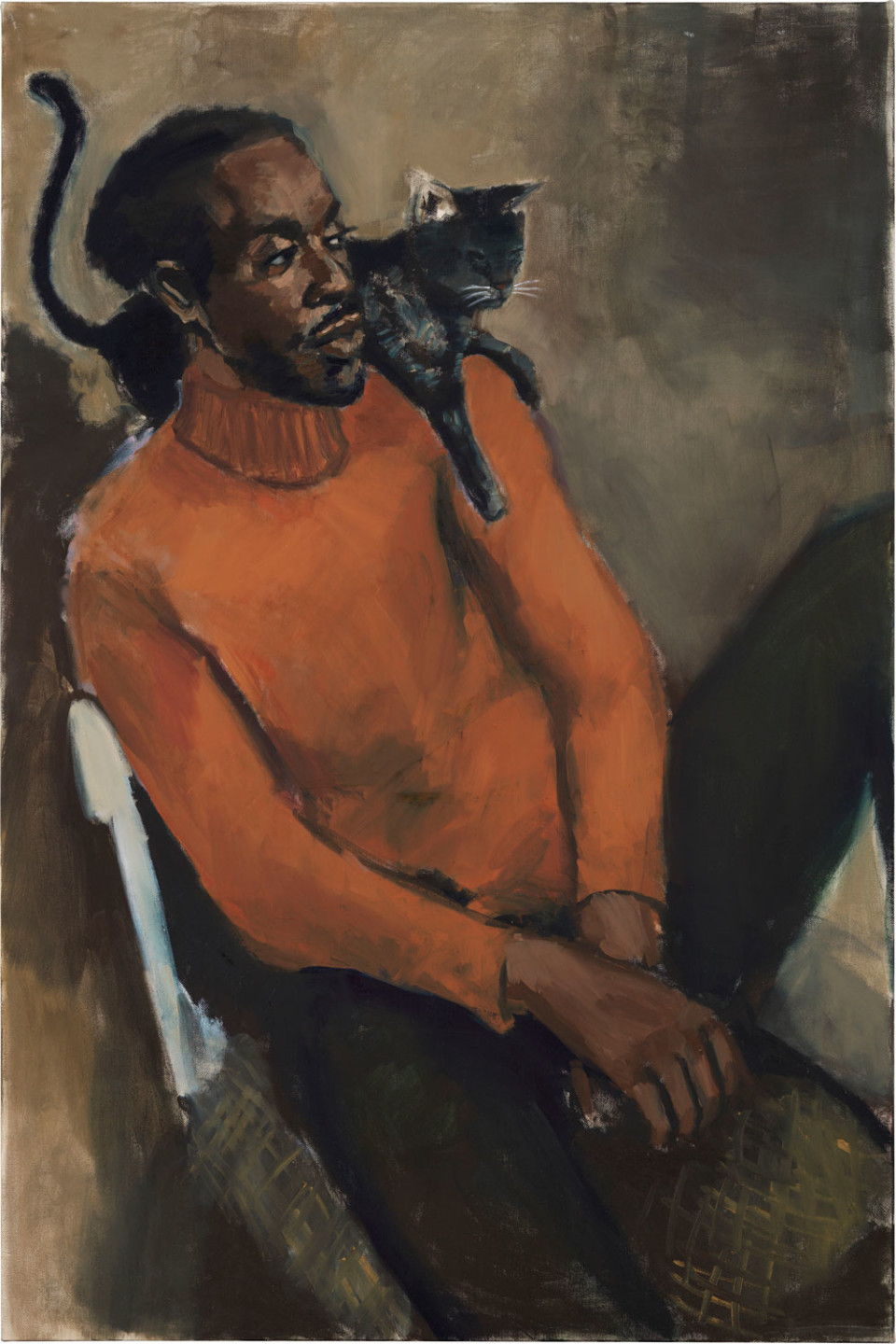
Influences and Inspiration
Lynette Yiadom-Boakye has a wide inspirational library. In her East London studio, the exhibition catalogues are piled high. Her work process is infused with art history, and yet her painting remains autonomous, telling new stories. Music has always had a strong influence on Yiadom-Boakye. Listening to Prince led to jazz, building a relationship between the improvised musical rhythm and the imprint of her brush. Miles Davis, John Coltrane, Nina Simone, and Bill Evans are a few of the legendary musicians that the artist shares in a playlist on Spotify, ”The sound of Lynette Yiadom-Boakye”.
The timbre of Nick Drake’s voice can reverberate in her work on a painting. She finds inspiration in literature’s capacity to evoke inner images by reading authors such as James Baldwin, Ted Hughes, Marlon James, and Zora Neale Hurston. In the exhibition catalogue, poet and essayist Elizabeth Alexander relates the quotidian in Gwendolyn Brooks’s poetry to the sense of intimacy in Yiadom-Boakye’s paintings. The dark ocean Alexander notes in writers and painters from the African diaspora, she suggests, is also present in Lynette Yiadom-Boakye’s understanding of colour.

